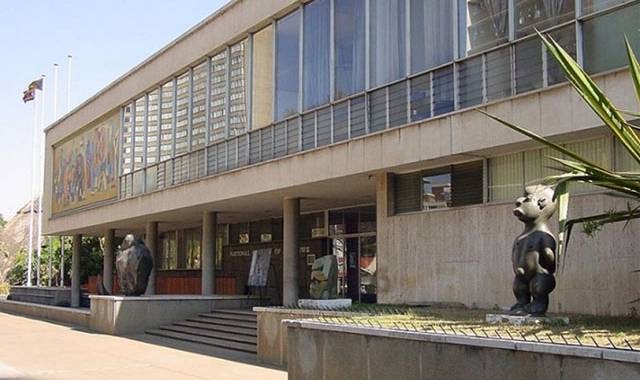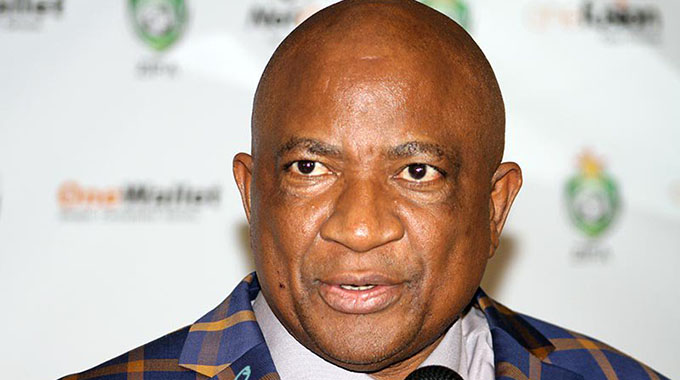Revisiting Zim history through the lens

At the Gallery
On February 22, the National Gallery of Zimbabwe opened the first exhibition of the year titled Lost and Found: Resilience, Expectations, Uncertainty, Excitement and Hope.
Curated by the National Gallery of Zimbabwe Chief Curator Raphael Chikukwa, the show attracted artists of different media. Lost and Found reaffirms the position of artist as the primary storyteller, using different media and enabling their voices to be heard.
In his officiating statement the guest of honour National Arts Council director, Elvas Mari, applauded artists they took their time to orchestrate such fascinating artworks. The works continue to live even after the exhibition thereby promoting and preserving our cultural heritage.
Over the decades art has experience a paradigm shift from being a hobby to a profession and now is part of the political order of the day. Like its predecessor, We Need New Names, a solo exhibition by Kudzanai Chiurai, Lost and Found seems to be an answer to the former. The art scene has paced itself towards greater prominence.
The Post-Independent era in the art sector is a charged storyline. The platform for the discussion of what it was to be Zimbabwean was triggered through numerous artworks with hope being thematically laced at the core of the young nation’s essence.
Twenty five artists featured in the Lost and Found exhibition. The artists include Davina Jogi, Ralph Chikambi, Lucy Broderick, Zinyange Auntony, Neville Starling, Nyadzombe Nyampenza, Oscar Lwalwe, Tafadzwa Gwetai, Charmaine Chitate, Mathew Boka, and Cuthbert Mukononyanga among others.
Davina Jogi is a Zimbabwean documentary photographer, currently working between Zimbabwe and Australia, who focuses on social justice issues. In her artwork titled Zimbabwe Solidarity March she poses that the March marked the first time in nearly four decades that Zimbabweans were able to protest against the president publicly without fear of reprisal.
Zimbabweans were deprived of parading around the streets with the flag but the march was indeed a march to liberty. Some of the artworks by Davina include, Call to Arms and Uncomfortable Truth.
Cuthbert Mukononyanga’s piece titled Rainbow Tug presents that the solidarity march was an invited different races, age groups, political parties thus people from different walks of life. Such variety had not been witnessed before in Zimbabwe, this goes a long way to show how much hurt there was in the people of the motherland Zimbabwe.
Such variety as in the colours of a rainbow is the theme of this piece. A rainbow of people pulling for the survival and glory of what they believe in.
In his other piece titled “Vana vevhu” in a limbo((Sons and daughters of the soil in limbo) depicts that the results of the March resulted in celebrations nation-wide With the celebrations fading for a new phase, the immediate aftermath presented a population with hope, dreams and questions.
Who’s next in power? What policies are they going to implement to relieve us of our economic situation? Our relationships with the rest of the world, will they change? The foreign policy, will they change it?
Tafadzwa Gwetai’s Patriotic Front artwork is a depiction of people at the forefront of a mission expressing devotion and vigorous support for the country. The 18th of November 2017 revived and gave birth to patriotism within the Zimbabweans. A ‘Patriotic Front’ gathered and revealed a pride for their Zimbabwean earth and home to a great and powerful ancestry.
On this day the entire Zimbabwean population was the ‘Patriotic Front’ and pushing forward the agenda of patriotism for Zimbabwe.
Charmaine Chitate is a multimedia designer, communication consultant and photojournalist based in Harare and presently pursuing a BA in Communication Science with the University of South Africa (UNISA).
Her work Trinity depicts that love; culture and religion have always been at the centre of any Zimbabwean’s life. The November proceedings after thirty-seven years yielded the love the people heard for their country by overcoming a culture of passivity. They found their saviour in the Zimbabwe National Army.
A formidable force, the army by the people on the streets strengthening their hope and Faith in a free Zimbabwe. Zimbabwe continues to lean on faith to strengthen its culture of love and dauntless courage.










Comments